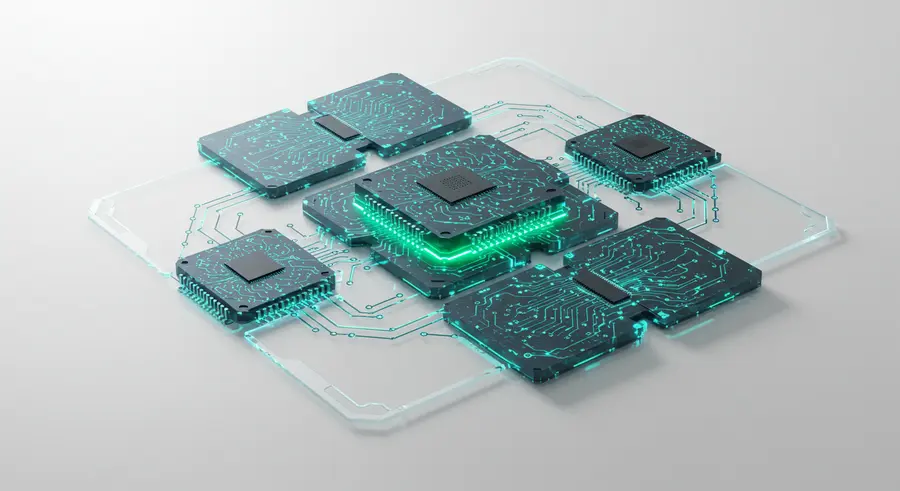Appearance

Welcome, fellow developers and tech enthusiasts! 👋 In today's rapidly evolving digital landscape, building scalable, maintainable, and agile web applications is paramount. The traditional monolithic frontend often becomes a bottleneck, hindering independent team work and slowing down deployment cycles. But what if we could break free from these constraints? Enter Micro-Frontends – an architectural paradigm that's revolutionizing how we approach web development by extending the principles of microservices to the frontend.
If you're already familiar with the basics, or just starting your journey, you can find more foundational insights in our catalogue: Understanding Micro-Frontends.
What Are Micro-Frontends (Revisited)?
At its core, Micro-Frontends involves splitting a large, complex frontend application into smaller, independent "micro-apps." Each micro-app is owned by a distinct team, developed autonomously, and can be deployed independently. This modularity fosters:
- 📈 Scalability: Easily scale specific parts of your application without affecting others.
- 🚀 Independent Deployments: Teams can deploy their features on their own schedule, reducing release cycles and time-to-market.
- 🤝 Team Autonomy: Empower cross-functional teams to make technology choices and work independently, boosting productivity and ownership.
- 🛠️ Technology Agnosticism: Different micro-frontends can be built using different frameworks (React, Vue, Angular, etc.), allowing teams to leverage the best tools for their specific needs.
- 🩹 Improved Maintainability: Smaller codebases are easier to understand, debug, and maintain, reducing cognitive load for developers.
The Road Ahead: Challenges and How to Conquer Them
While the benefits are compelling, adopting Micro-Frontends isn't without its hurdles. Here are some common challenges and strategies to overcome them:
Code Duplication and Inconsistencies:
- Challenge: Sharing common components (e.g., design system, utility libraries) across multiple micro-frontends without duplicating code can be tricky. This can lead to larger bundle sizes and inconsistent user experiences.
- Solution: Implement a shared design system and component library. Tools like Storybook can help manage and showcase these components. Utilize package managers (npm, yarn) to share common utility functions or hooks.
Consistent UI/UX:
- Challenge: With different teams working on separate parts, maintaining a cohesive look and feel across the entire application can be a nightmare.
- Solution: A robust design system is crucial. Establish clear UI/UX guidelines, component libraries, and visual standards that all teams adhere to. Regular design reviews and collaboration between design and development teams are also key.
Communication Overhead and Integration:
- Challenge: Coordinating between independent teams and ensuring seamless communication between micro-frontends can become complex.
- Solution: Define clear API contracts and well-established communication channels (e.g., custom events, pub-sub patterns, shared state management solutions like Redux or Zustand for specific, shared data). Versioning these APIs is vital to prevent breaking changes.
Performance Considerations:
- Challenge: Loading multiple independent micro-frontends can potentially impact initial page load times and overall performance if not optimized.
- Solution: Implement lazy loading for micro-frontends. Optimize asset delivery through CDNs. Explore server-side rendering (SSR) or static site generation (SSG) where appropriate to improve initial load performance. Module Federation (Webpack 5) or similar solutions can optimize shared dependencies.
Robust DevOps Practices:
- Challenge: Managing independent deployment pipelines for numerous micro-frontends requires a mature DevOps culture and sophisticated tooling.
- Solution: Invest in automated CI/CD pipelines for each micro-frontend. Implement comprehensive testing strategies (unit, integration, end-to-end). Embrace observability with robust logging, monitoring, and tracing tools to quickly identify and resolve issues across distributed frontends.
The Future of Micro-Frontends: What's Next?
The Micro-Frontends paradigm is continually evolving. Here's a glimpse into exciting future trends:
- AI Integration: Expect AI to play a significant role in automating complex decisions during micro-frontend development, from code generation to performance optimization and anomaly detection in distributed systems.
- Improved Tooling and Frameworks: The ecosystem will mature with more sophisticated tools that simplify orchestration, inter-frontend communication, and shared state management. Frameworks will increasingly offer built-Frontend capabilities.
- Server-Side Composition and Edge Computing: Greater emphasis on composing micro-frontends on the server-side or at the edge to improve initial load times and deliver highly personalized experiences.
- WebAssembly (Wasm) Integration: Wasm could enable even greater language and framework agnosticism, allowing parts of micro-frontends to be written in languages like Rust or Go for performance-critical sections.
Conclusion
Micro-Frontends offer a powerful solution for building large, complex web applications that are highly scalable, maintainable, and adaptable. By embracing modularity, empowering teams, and proactively addressing the architectural challenges with best practices, you can unlock the full potential of this transformative approach. The future of web development is modular, independent, and incredibly exciting!
Are you ready to embrace the micro-frontend revolution? Let us know your thoughts in the comments! 👇